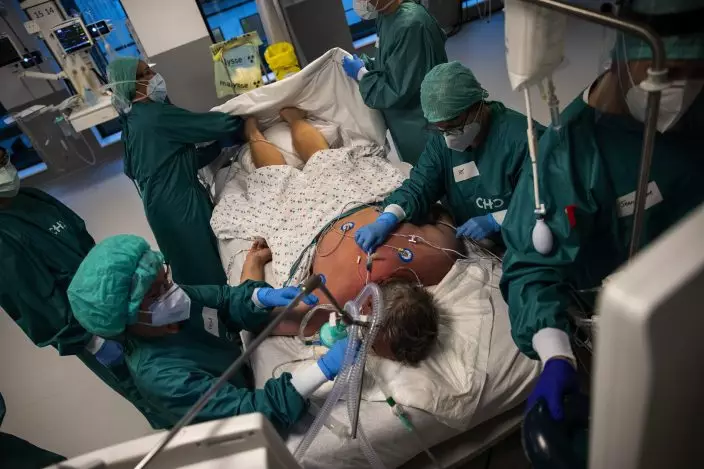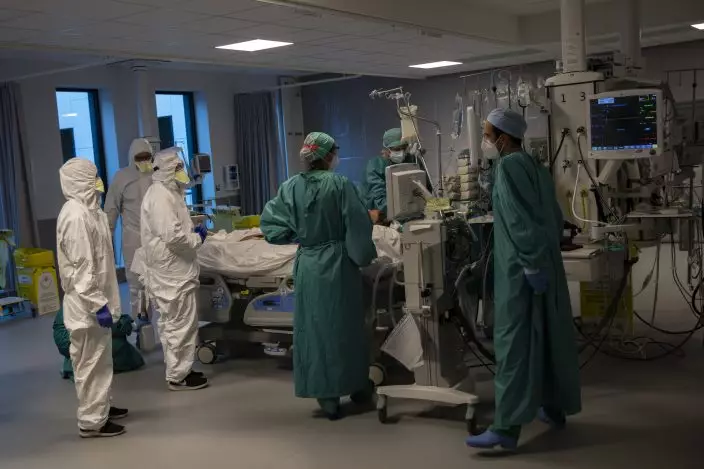Belgian health authorities are confident the second wave of hospital admissions related to COVID-19 has peaked in the hard-hit country.
Speaking at a news conference by the coronavirus crisis center Monday, virologist Yves Van Laethem said about 400 people were hospitalized due to coronavirus complications on Sunday, compared with 879 on Nov. 3.
“Subject to an unpleasant surprise,” the peak in hospital admissions was reached that day, Van Laethem said.

Medical personnel work in the intensive care ward for Covid-19 patients at the MontLegia CHC hospital in Liege, Belgium, Friday, Nov. 6, 2020. Coronavirus cases have surged around Europe in recent weeks, putting fresh pressure on overworked medical staff and hospitals, and forcing several countries to impose tough new movement restrictions. (AP PhotoFrancisco Seco)
Some 6,948 patients are currently being treated in Belgian hospitals following a COVID-19-infection. It’s about 500 less than on Nov. 3.
To break the chain of contamination, Belgium has returned to partial lockdown measures including the closure of nonessential shops, bars and restaurants, as well as the extension of the autumn school vacation.
The measures seem to have had an impact, as the number of patients in intensive care is also tending to stabilize, Van Laethem said. As much of Europe battled with soaring infection rates, there were fears last month that Belgium would reach its maximum capacity for COVID-19 patients in intensive care by mid-November.

Medical personnel work in the intensive care ward for COVID-19 patients at the MontLegia CHC hospital in Liege, Belgium, Friday, Nov. 6, 2020. Coronavirus cases have surged around Europe in recent weeks, putting fresh pressure on overworked medical staff and hospitals, and forcing several countries to impose tough new movement restrictions. (AP PhotoFrancisco Seco)
To avoid a collapse of the health system, health minister Frank Vandenbroucke said last month that the number of beds available in ICUs for COVID-19 patients would be increased to 2,300. On Nov. 3, 1,469 patients were hospitalized in intensive care.
Although some intensive care units across the country are at their maximum capacity, Van Laethem said “there is a trend toward the right direction.”
Belgium also witnessed a 40 percent decrease in daily new infections over the past seven days compared with the previous week.
“Pressure is still extremely high in the field, but there is a sunny spell on the horizon, we should see a stabilization, and maybe a decrease in the number of patients from the middle or the end of this week,” Van Laethem added.
More than 13,000 people have died from COVID-19-related causes in Belgium, a country with 11.5 million inhabitants. Belgium had one of the highest death rates during the first wave of the pandemic in the spring. This autumn, it was for a while the European country with the highest number of coronavirus cases per 100,000 people.
Follow AP pandemic coverage at http://apnews.com/VirusOutbreak and https://apnews.com/UnderstandingtheOutbreak


